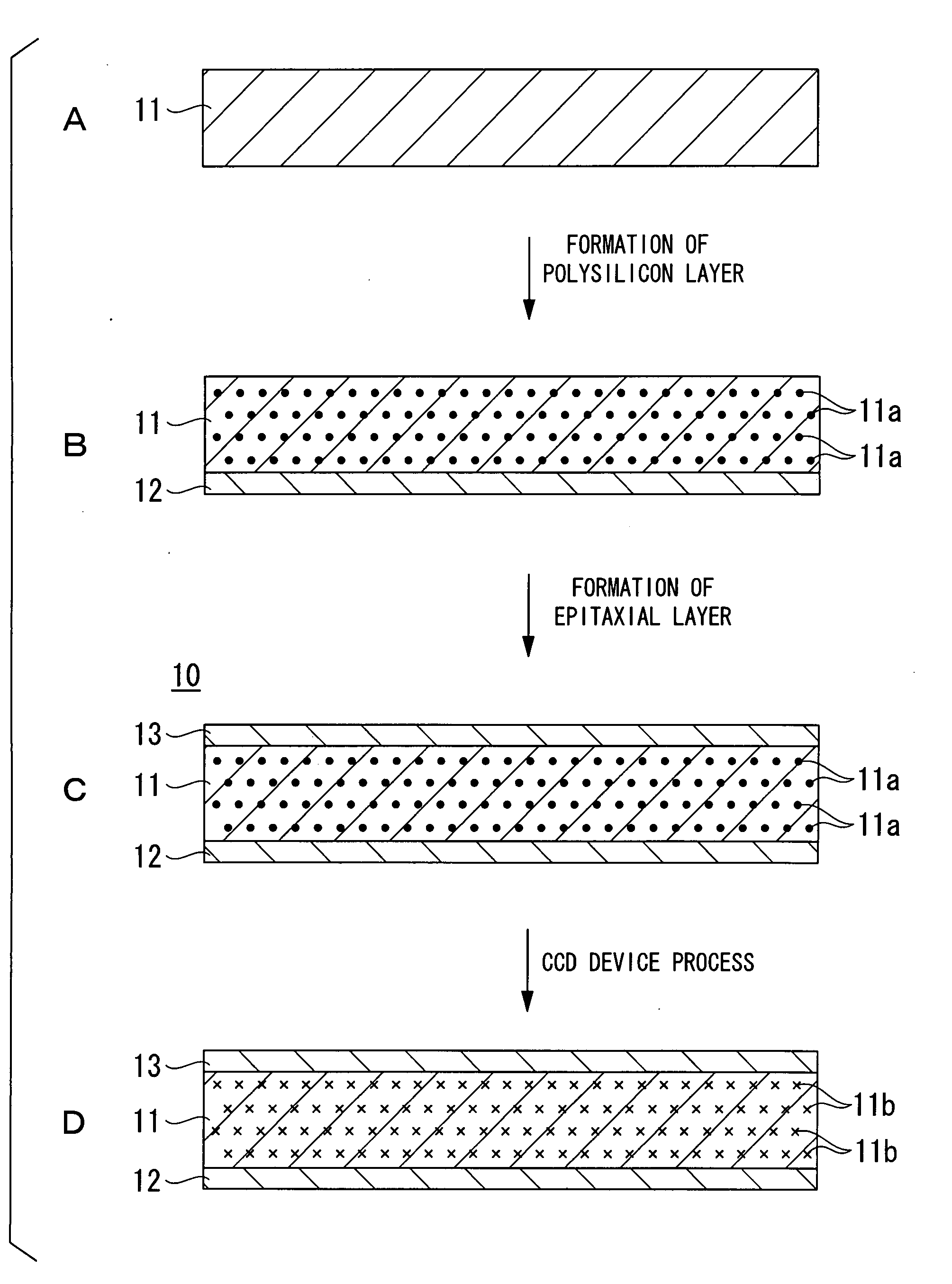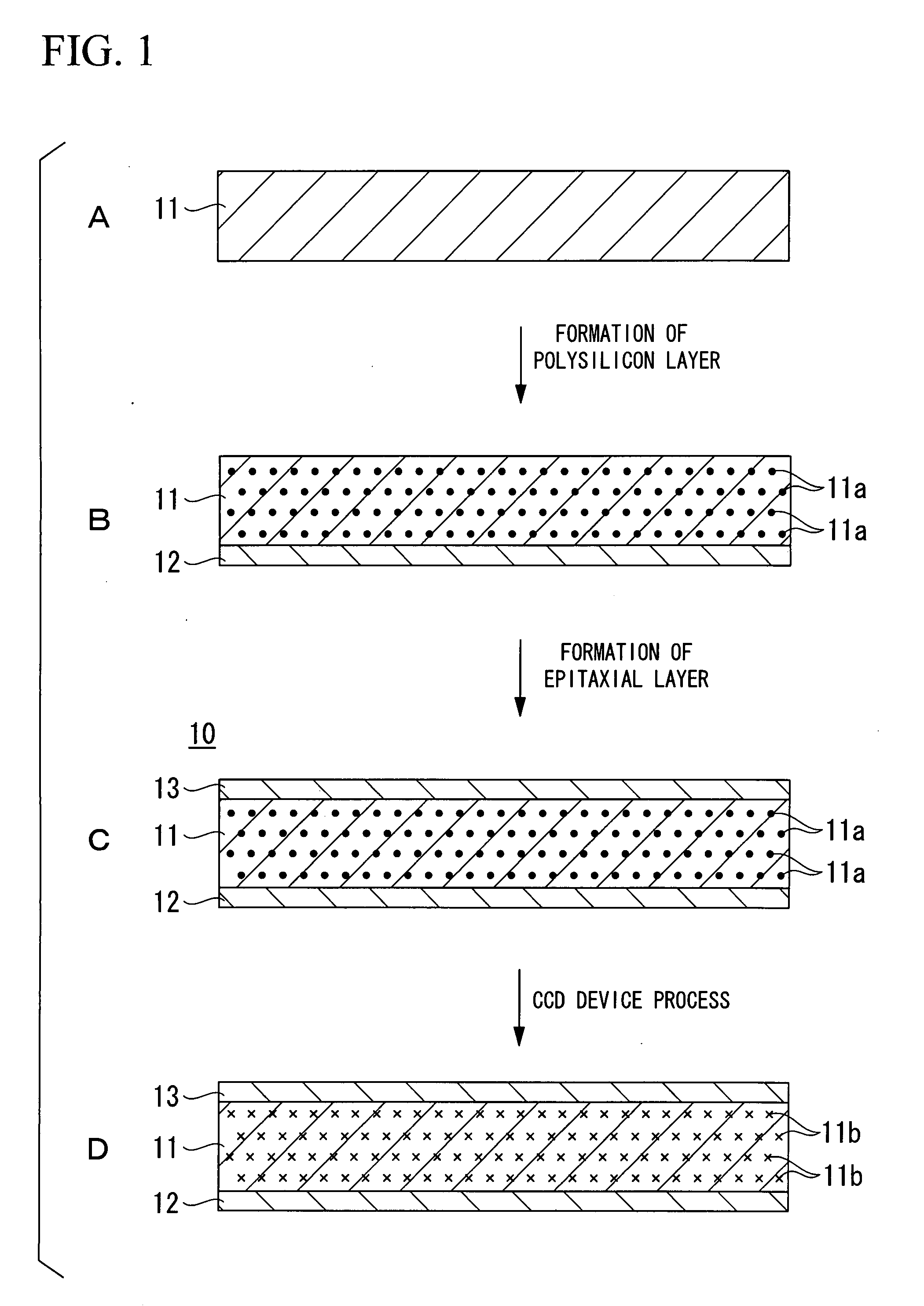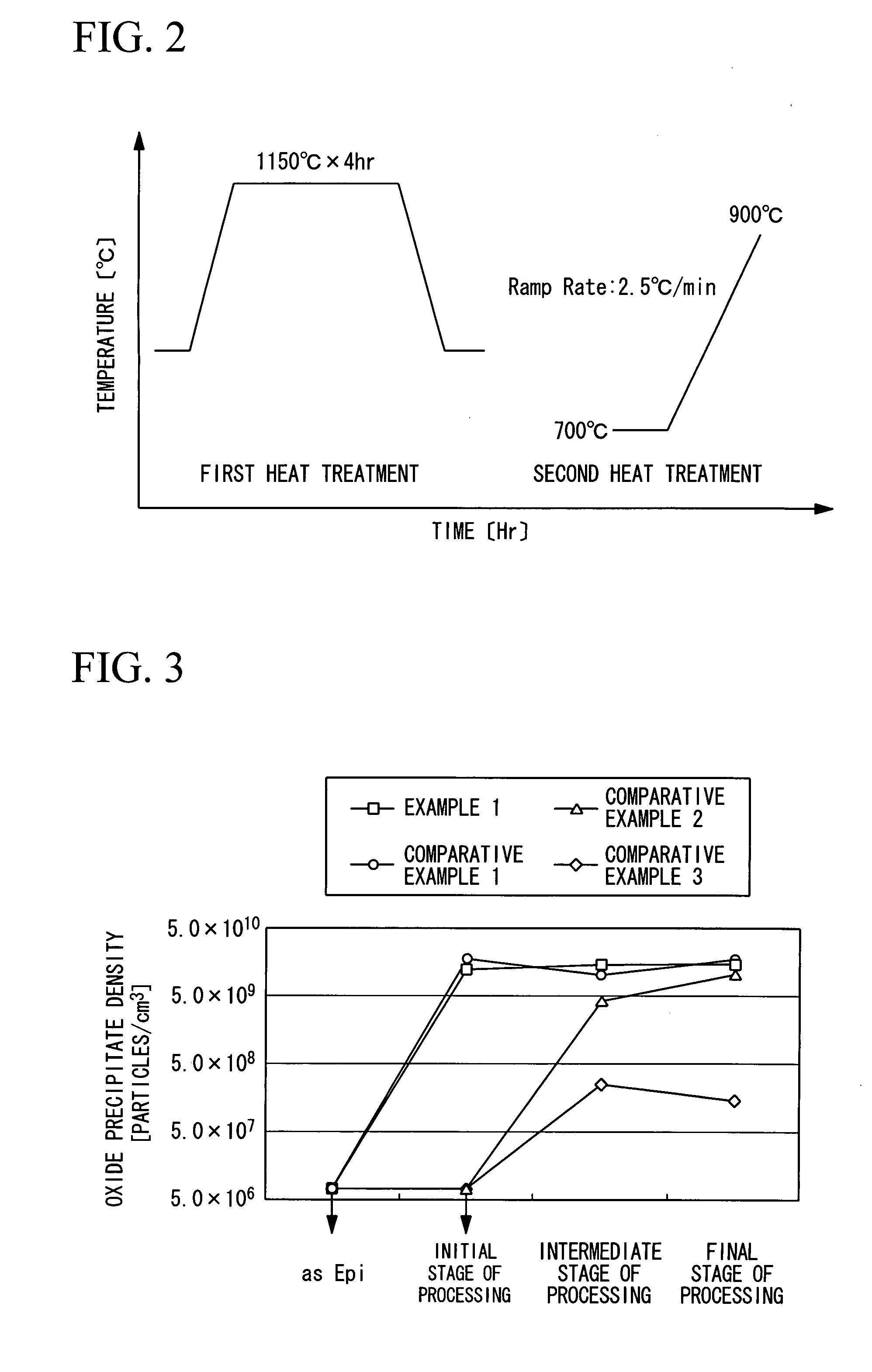Silicon epitaxial wafer and production method for same
a technology of epitaxial wafers and production methods, applied in the direction of sustainable manufacturing/processing, instruments, radiological control devices, etc., can solve the problems of reducing the yield of imaging devices, image cannot be captured at the position of white defects, and white defects, etc., to achieve optimum applicability to production, improve yield, and the effect of sufficient ig
- Summary
- Abstract
- Description
- Claims
- Application Information
AI Technical Summary
Benefits of technology
Problems solved by technology
Method used
Image
Examples
example 1
[0040]Firstly, a silicon ingot doped with P at a concentration of 4.4×1014 atoms / cm3 and carbon at a concentration of 1×1016 atoms / cm3 (ASTM F123-1981), having an oxygen concentration of 15×1017 atoms / cm3 (ASTM F121-1979), and having a resistivity of 10 Ω·cm was grown by the CZ method. Then, n-type silicon wafers having a diameter of 8 inches were sliced from the ingot. Next, a polycrystalline silicon layer of 1 μm in thickness was formed on a backside of the silicon single crystal wafer. Next, on the front surface of the silicon single crystal wafer, an epitaxial layer of n-type silicon single crystal having a resistivity of 10 Ω·cm was epitaxially grown so as to have a thickness of 10 μm. Thus, an epitaxial wafer was obtained.
PUM
| Property | Measurement | Unit |
|---|---|---|
| thickness | aaaaa | aaaaa |
| thickness | aaaaa | aaaaa |
| temperature | aaaaa | aaaaa |
Abstract
Description
Claims
Application Information
 Login to View More
Login to View More - R&D
- Intellectual Property
- Life Sciences
- Materials
- Tech Scout
- Unparalleled Data Quality
- Higher Quality Content
- 60% Fewer Hallucinations
Browse by: Latest US Patents, China's latest patents, Technical Efficacy Thesaurus, Application Domain, Technology Topic, Popular Technical Reports.
© 2025 PatSnap. All rights reserved.Legal|Privacy policy|Modern Slavery Act Transparency Statement|Sitemap|About US| Contact US: help@patsnap.com



